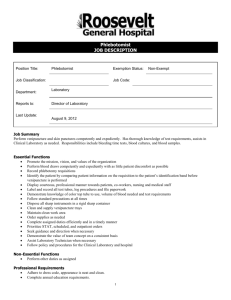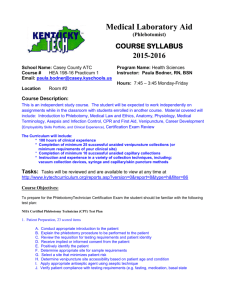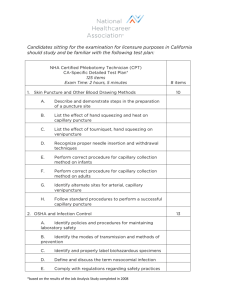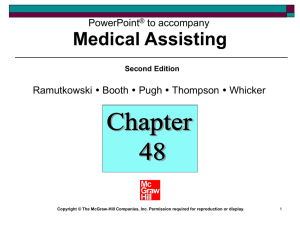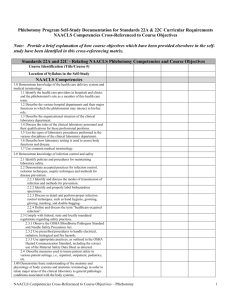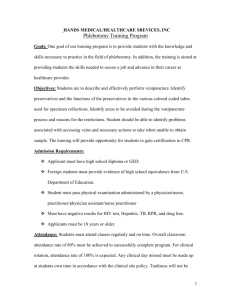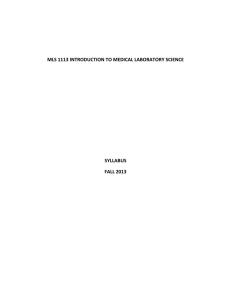NHA Certified Phlebotomy Technician (CPT)
advertisement
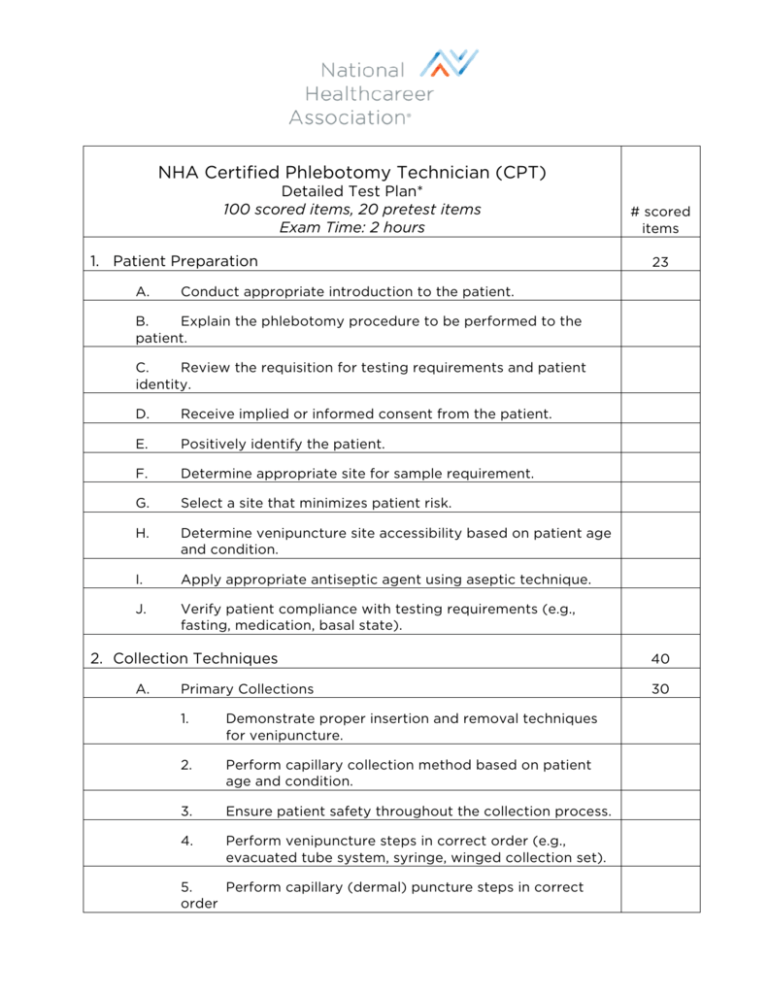
NHA Certified Phlebotomy Technician (CPT) Detailed Test Plan* 100 scored items, 20 pretest items Exam Time: 2 hours 1. Patient Preparation A. # scored items 23 Conduct appropriate introduction to the patient. B. Explain the phlebotomy procedure to be performed to the patient. C. Review the requisition for testing requirements and patient identity. D. Receive implied or informed consent from the patient. E. Positively identify the patient. F. Determine appropriate site for sample requirement. G. Select a site that minimizes patient risk. H. Determine venipuncture site accessibility based on patient age and condition. I. Apply appropriate antiseptic agent using aseptic technique. J. Verify patient compliance with testing requirements (e.g., fasting, medication, basal state). 2. Collection Techniques A. Primary Collections 1. Demonstrate proper insertion and removal techniques for venipuncture. 2. Perform capillary collection method based on patient age and condition. 3. Ensure patient safety throughout the collection process. 4. Perform venipuncture steps in correct order (e.g., evacuated tube system, syringe, winged collection set). 5. Perform capillary (dermal) puncture steps in correct order 40 30 B. 6. Recognize common complications from primary collection (e.g., lack of blood flow, hematoma, petechiae, nerve injury). 7. Identify problematic patient signs and symptoms throughout collection (e.g., syncope, diaphoresis, nausea, seizure). 8. Follow order of draw when performing venipuncture. 9. Follow order of draw when performing capillary collection. 10. Ensure that tube additives are appropriate for testing requirements. 11. Assemble equipment needed for primary blood collections. 12. Invert evacuated tubes with additives after collection. 13. Verify quality of equipment (e.g., sterility, expiration date, manufacturer’s defects). Special Collections 1. Prepare peripheral blood smears. 2. Perform blood culture collections. 10 3. Assist other healthcare professionals with blood culture collections. 4. Collect blood samples for inborn errors of metabolism (e.g., PKU, galactosemia). 5. Perform phlebotomy for blood donations. 6. Calculate volume requirements to avoid causing iatrogenic anemia. 3. Processing A. Label all specimens. B. Perform quality control for CLIA-waived procedures. C. Transport specimens based on handling requirements (e.g., temperature, light, time). D. Explain non-blood, specimen collection procedures to patients (e.g., stool, urine, semen, sputum). *based on the results of the Job Analysis Study completed in 2011 27 E. Handle patient-collected, non-blood specimens. F. Avoid pre-analytical errors when collecting blood specimens (e.g., QNS, hemolysis). G. Adhere to chain of custody guidelines when required (e.g., forensic studies, blood alcohol, drug screen). H. Prepare samples for transportation to a reference (outside) laboratory. I. Coordinate communication between non-laboratory personnel for processing and collection. J. Use technology to input and retrieve specimen data. K. Report critical values for point of care testing. L. Distribute laboratory results to ordering providers. 4. Safety and Compliance Considerations A. Adhere to regulations regarding workplace safety (e.g., OSHA, NIOSH). B. Adhere to regulations regarding operational standards (e.g., JCAHO, CLSI). C. Adhere to HIPAA regulations regarding Protected Health Information (PHI). D. Follow exposure control plans in the event of occupational exposure. E. Follow transmission based precautions (e.g., iatrogenic, airborne, droplet, contact). F. Wear personal protective equipment while following standard precautions (e.g., gloves, gowns, masks, shoe covers). G. Sanitize hands to prevent the spread of infections. H. Initiate first aid when necessary. I. Initiate CPR when necessary. *based on the results of the Job Analysis Study completed in 2011 10
